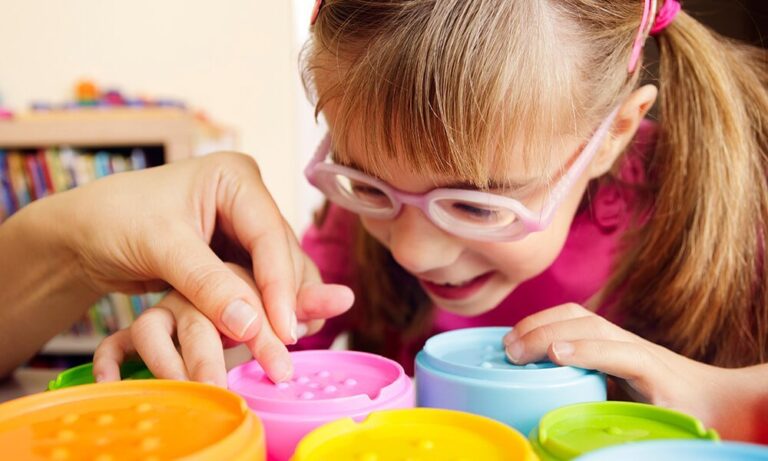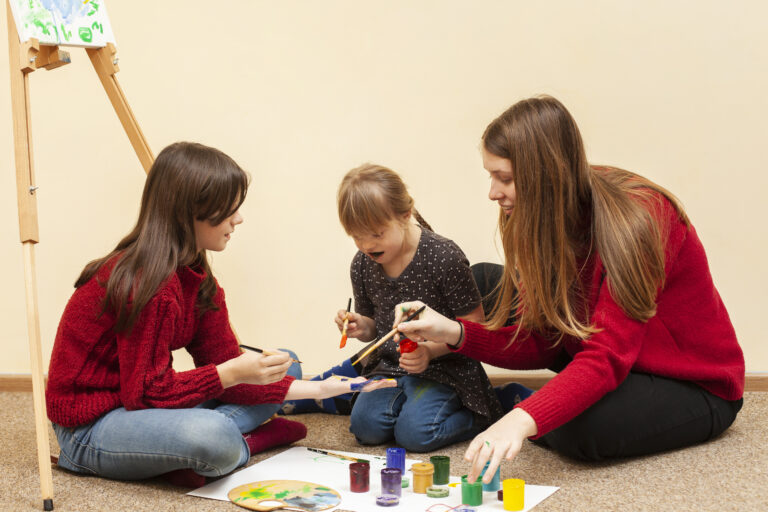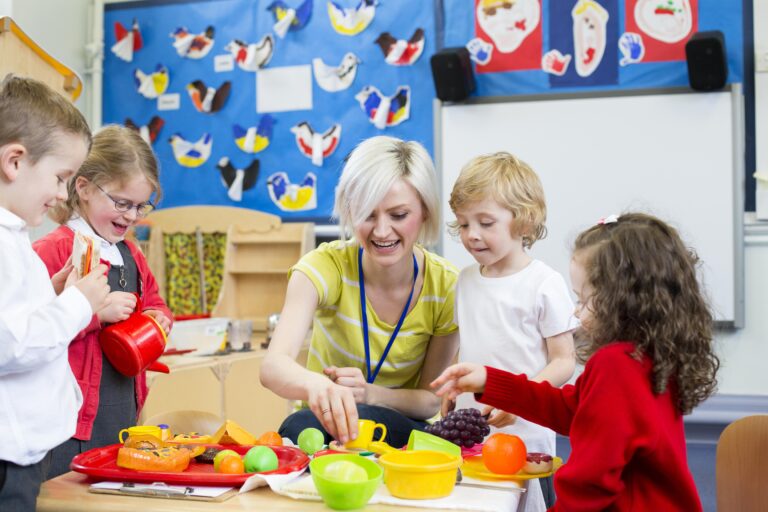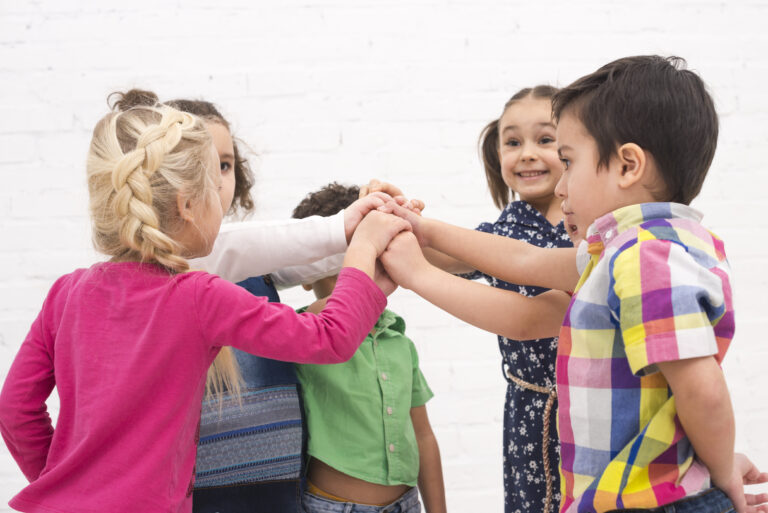Creative Summer Learning: How Autism Schools Can Keep Skills Sharp During the Break
Summer is often seen as a well-earned pause from academics, but for families and children with autism, this “break” can bring both opportunity and risk. After months of steady progress within autism-focused schools, summer’s looser routines and sudden changes sometimes cause social and academic skills to regress. However, with thoughtful planning and collaborative support, summer becomes a canvas for creative learning, social connection, and joyful skill-building. Instead of pausing growth, families and schools can work together, weaving learning into the rhythms of play, daily living, and discovery. When schools share practical, accessible activities in areas like sensory play, the arts, and ABA-supported skill practice, summer turns into a season for ongoing progress and new memories.
Making a Plan: Setting the Summer Stage
As the school year winds down, educators can encourage families to keep certain routines and learning habits in place. This is most successful when summer plans start with open communication between teachers and caregivers. Rather than overwhelming families with packets or formal instruction, the most effective strategies draw on the child’s strengths and interests, blending structured learning moments into summer days that still feel relaxed and fun. Clear guidance for families might come in the form of a simple visual daily schedule, outlining morning preparation, favorite activities, rest breaks, and time for shared reading or creative projects.
Summer also benefits when predictability is balanced with flexibility—where children can try new things and make choices about how their days unfold, but always know when meals happen, when play is expected, and how they can self-regulate if routines change.
Sensory Play: The Heart of Hands-On Summer Learning
For autistic children, sensory activities are more than enjoyable—they’re essential for calming, focus, and exploration. This could look like a child running hands through a rice bin filled with small toys, swirling water in a backyard tub, or discovering the smooth and rough sides of leaves in the garden. These actions build attention, language, and curiosity. Sensory play can easily be part of summer routines at home or in the community.
Families might set up simple sensory stations outside with sand, water, or safe textured materials. Indoors, painting with fingers, squishing playdough, or experimenting with scented markers tap into multiple senses and support self-expression. These activities often invite language development, such as naming colors and textures, or using new words to describe what’s been created. Siblings or neighborhood friends can join in, encouraging social engagement through shared discoveries and turn-taking.
The beauty of sensory play is its adaptability. Some days, the child may need calming water play to relax; other days, digging into a bin of beans sparks exciting pretend play. Schools can guide families to notice how children respond, and to adjust activities to match sensory needs.
Arts and Crafts: Creativity Meets Life Skills
Summer is an ideal time for children to discover and deepen their artistic voice. Engaging in arts and crafts builds far more than fine motor skills and visual processing—it can foster patience, self-confidence, and even new friendships. Organizing craft time does not require fancy supplies. Painting with kitchen tools, assembling nature collages with leaves and stones, or creating puppets from socks and fabric all open doors to learning.
Through art projects, children can make choices, express feelings, and practice following multi-step directions. For example, a child who chooses the colors for a homemade bracelet or the shapes on a painted rock practices decision-making and planning. When an art activity is broken into clear, sequential steps, children can build understanding of routines, complete tasks more independently, and celebrate their personal accomplishments.
Collaborative projects, such as creating a group mural with family members, help practice important social skills: sharing materials, waiting for turns, and communicating ideas. Displaying finished art at home builds pride and invites conversations with visitors, deepening language development.
ABA-Supported Activities: Blending Evidence-Based Skill Building with Summer Fun
For many students, school-based programming that uses principles of Applied Behavior Analysis (ABA) is a foundation for learning in communication, academics, and behavior. Summer is an ideal time for parents to continue these principles at home, but in a way that’s relaxed and naturally embedded in daily routines.
Rather than worksheets or rigid drills, schools can encourage families to turn everyday experiences into learning moments. Setting the table becomes an opportunity to count, sort, and request. Board games provide practice in turn-taking, following rules, and managing disappointment. Reading a picture book together supports both language skills and time for connection, while a walk outdoors might be a chance to use descriptive language or work on community safety.
For children who benefit from clear expectations, task analysis (breaking big chores into small steps) is helpful. For example, preparing a snack together might involve gathering ingredients, following picture cues to complete each step, and cleaning up—each mini-task building confidence and independence.
Reinforcement, or celebrating effort with praise or shared enjoyment of an activity, ensures these moments remain positive. Instead of external rewards, parents can use favorite activities—“When we finish cleaning up, let’s build a fort together!”—as motivation.
Maintaining Academic and Social Skills Through Everyday Routines
Families do not need to replicate the classroom at home to maintain learning. Instead, using routines—like cooking breakfast, organizing toys, or caring for pets—can reinforce almost every skill gained during the school year. Cooking, for instance, requires sequencing, reading, counting, measuring, fine motor skills, and flexible problem-solving. Shopping for ingredients or visiting a neighborhood store offers opportunities to practice greeting, requesting, money use, and community safety.
For older children, journaling about summer adventures or keeping a calendar of special events can support writing and time awareness. For younger ones, sorting laundry by color, drawing daily weather, or simply singing familiar school songs together is developmentally rich.
Social skills may be practiced in short playdates, family game nights, or community outings. It is important to prepare children with social stories or visual cues, explaining what is expected and how to ask for a break if needed. Encouraging connection with one or two friends over the break helps maintain peer relationships and keeps social learning active, even when classmates are apart.
Addressing Challenges and Encouraging Flexibility
No summer, no matter how well planned, goes without unexpected changes—rainy days, changes in caregiver schedules, or sudden trips can disrupt routines. Preparing children for flexibility and supporting emotional regulation is especially important. Social stories can be created to help children anticipate what might happen when plans change, using reassuring language and simple visuals.
It is also helpful to provide children with a “toolbox” for self-regulation—these might include deep breathing, access to a calm corner, sensory supports, or a communication card to indicate, “I need a break.”
Family members can model flexible thinking aloud: “We planned to go to the park, but it’s raining. That’s disappointing! Let’s choose a new activity together.” When adults acknowledge emotions honestly and guide children through alternative plans, resilience and coping skills grow.
Keeping Everyone Engaged: Inviting the Child’s Voice
A successful summer is not just planned around a child, but with them. Whenever possible, include children in decisions about activities, projects, and outings. Ask what they are curious about, what games or books they’d like, or which friends they want to stay connected with during the break. For non-speaking children, offer options to choose using pictures, pointing, or assistive devices.
A weekly planning session with the whole family, even if informal, gives children a sense of ownership and anticipation. Working together to decorate a “summer board” with schedules, goals, and memories helps everyone stay motivated and engaged.
The Power of Play and Exploration
Sometimes the richest learning comes through open-ended play and discovery. Loose parts play—using household items, natural materials, or building kits—invites creativity, experimentation, and problem-solving. Outdoor adventures, like nature walks, scavenger hunts, or simple gardening, connect children to the world outside, offer abundant sensory experiences, and encourage appreciation for change and growth.
Play does double-duty: it keeps children’s brains sharp and helps process emotions, build resilience, and strengthen bonds with family.
Documenting and Celebrating Summer Growth
Families and educators can encourage children to document their summer journeys. This might mean keeping a simple photo journal, drawing pictures of new places visited, or saving art projects and stories in a special portfolio. At the end of summer, reviewing these memories together brings closure, pride, and a sense of accomplishment—making the transition back to school smoother.
Recognizing progress, no matter how small, is essential. Mastering a new recipe, solving a puzzle independently, joining a new summer game, or simply handling an unexpected change with less stress are all victories. Positive feedback and family celebrations reinforce that learning is ongoing and that every step forward matters.
Looking Ahead: Building on Summer’s Success
As fall approaches, families can share summer documentation with teachers to give insight into what the child enjoyed and accomplished. This strengthens the school-home partnership, allowing educators to build on emerging interests, new skills, and the confidence gained over summer.
Schools may also help by sending “welcome back” social stories, organizing transition activities, or offering time for children to reconnect with friends and teachers before the full routine resumes.
Conclusion
Creative summer learning doesn’t require fancy materials or strict academic work—it thrives in the daily moments families share and in simple, meaningful activities tailored to a child’s unique strengths and interests. By focusing on sensory play, the arts, and real-life learning opportunities, families keep their children’s skills sharp and spirits high. ABA-supported practices can be woven into summer living, and frequent collaboration with educators ensures everyone moves forward together.
A summer designed in partnership with children, rather than for them, builds enthusiasm, resilience, and a lifelong love of learning. By replacing anxiety around skill loss with joyful learning and connection, families and autism schools create foundations for success that last long after the season ends. Prioritizing social skills for kids with special needs during this time helps strengthen relationships, boost confidence, and support meaningful growth both inside and outside the classroom.
Remember: The real magic of summer happens when learning is not a task, but a shared adventure. Let’s make every break count.





